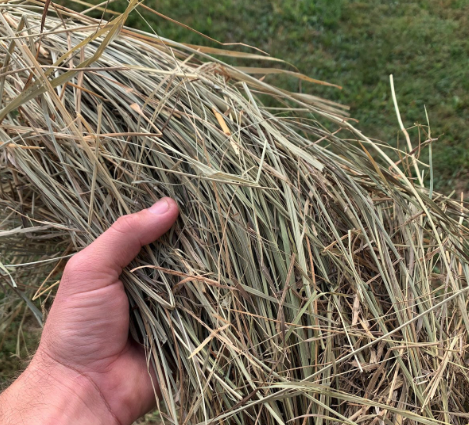
Protein vs. Energy / Testing Nutrient Levels
No one likes to feed hay. But winter months often dictate that you feed a round bale or two to keep your herd satisfied. Because hay quality can vary, making the investment to have your hay tested can ensure your herd’s nutrient requirements are covered.
Testing Hay to Determine Quality
A basic hay test will measure the amount of moisture, crude protein and digestibility. These nutrients are used to calculate the total digestible nutrient (TDN) value, which is correlated with energy. The higher the protein and energy levels are, the better the quality of hay.
Hay quality is based on multiple factors, all of which center around when and when it was grown and harvested. Hay cut earlier in the season will have more energy and protein, and be more digestible. The later in the year you harvest hay, though, the more mature your grass will be, causing quality to diminish.
When collecting samples for testing, be sure to sample from each cutting in each field. Even if it comes from the same field, the quality of your second or third cutting is going to be different than the first round.
Balancing Protein and Energy for Quality Hay
While second and third cuttings of hay can produce higher quality hay, it’s important that the first cutting happens when the grass is still in its vegetative stage. This ensures it has more leaf material than stems, resulting in higher protein and energy. As the grass matures, the amount of leaf material available drops, which increases fiber content and lowers the hay’s digestibility.
Ideally, all hay will have adequate protein and energy, while still being digestible. But that doesn’t always happen. That’s when your hay test can help you manage how to feed and supplement your herd.
Whether you’re feeding cattle, horses or sheep, hay with a low TDN number may fill your animals’ stomach, but there won’t be enough protein or energy to support their performance or growth. These key nutrients are needed for reproductive and immune functions to operate properly.
Ideally, a quality hay will have a CP (crude protein) level above 7% and TDN levels between 52-59%. The higher the CP and TDN, the less hay animals will need to eat.
Ultimately, when it comes to quality hay, you can’t always rely on how it looks. Understanding how to read a hay test and manage your herd’s nutritional needs will help you develop a cost-effective feed program based on your performance goals.
If you are unsure how to test your hay, Missouri University Extension offers this quick video showing how to take quality samples. Contact your local Missouri Southern Seed rep to determine the right hay for your herd.
